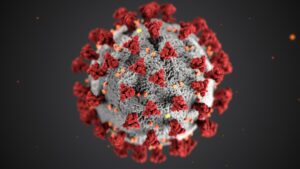Introduction
Pure-O OCD, also known as “Pure Obsessional” OCD, is a subtype of Obsessive-Compulsive Disorder characterized by predominantly obsessional thinking without overt, observable compulsive behaviors. However be aware because the term “Pure-O” is somewhat of a misnomer, as compulsions do exist, but they are primarily internal and cognitive in nature. This subtype highlights the internal struggles individuals face with intrusive thoughts and the mental rituals they perform in response.
Dispelling the “Pure-O” Myth
While individuals with Pure-O OCD may not engage in obvious physical rituals, they do experience compulsions. These compulsions manifest as mental rituals or cognitive behaviors aimed at alleviating anxiety or preventing perceived harm. These can include rumination, mental checking, and attempts to gain certainty or reassurance. In other forms of OCD the compulsions might be overt or external thus making the distinction more clear than it might be with Pure-O subtypes. Understanding that compulsions are present, albeit not always visible, is crucial in providing appropriate care.
A Note About “Intrusive” Thoughts
Many people come to treatment for OCD and complain about the distressing nature of intrusive thoughts. It is understandable why people call them “intrusive”: the thoughts are unwanted, distressing, and scary. Because we have to have some way to talk about the concept and nature of OCD, the term “Intrusive thoughts” was created and used widely in the OCD research and treatment manuals. However, “Intrusive thoughts” is a problematic term. Labeling some thoughts as intrusive and others as not-intrusive leads to confusion and an expectation that a person should only experience certain types (i.e, non-intrusive or non-disturbing) of thoughts and not experience other types. This idea leads to increased confusion and suffering in the person with OCD.
Characteristics of Pure-O OCD
- “Intrusive”, Distressing Thoughts: Individuals with Pure-O OCD experience thoughts that are often distressing, unwanted, and contrary to their true desires or values. These thoughts can cover a wide range of themes, including fears of harm, contamination, or inappropriate or taboo subjects.
- Mental Compulsions: The compulsions in Pure-O OCD are primarily mental in nature. They involve cognitive behaviors like rumination, mental checking, and attempts to obtain reassurance or answers to unanswerable questions. These rituals are performed in an attempt to neutralize or lessen the distress caused by the obsessions.
- Avoidance and Safety Behaviors: Individuals with Pure-O OCD may engage in avoidance behaviors or develop safety strategies to reduce anxiety. This can involve avoiding specific triggers or situations that provoke intrusive thoughts.
- High Levels of Anxiety: The thoughts in Pure-O OCD can lead to high levels of anxiety, often causing significant distress and impairing daily functioning.
Characteristics of Pure-O OCD
- Harm Obsessions: An individual might experience thoughts about causing harm to themselves or others, despite having no intention or desire to do so. To counteract this distressing thought, they may engage in mental compulsions like repeatedly telling themselves they would never act on these thoughts.
- Doubt and Uncertainty: Someone with Pure-O OCD may be plagued by persistent doubts or questions that are impossible to answer definitively. They might spend hours trying to find a certain answer or seeking reassurance, even though no conclusive answer exists.
- Intrusive Sexual or Violent Thoughts: Individuals may experience sexual or violent thoughts that go against their personal values and beliefs. They may engage in mental compulsions to try to suppress or neutralize these thoughts.
Empirically Supported Treatments
- Cognitive Behavioral Therapy (CBT): CBT, including Exposure and Response Prevention (ERP), is highly effective for Pure-O OCD. ERP focuses on exposing individuals to their feared thoughts and situations while preventing them from engaging in mental compulsions. This helps individuals learn to tolerate uncertainty and distress.
- Mindfulness-Based Interventions: Techniques from mindfulness-based approaches, such as Mindfulness-Based Stress Reduction (MBSR) and Acceptance and Commitment Therapy (ACT), can be valuable complements to traditional treatments. These practices help individuals develop non-judgmental awareness and acceptance of their thoughts and emotions.
Conclusion
Pure-O OCD is a complex manifestation of OCD characterized by “intrusive” thoughts and mental rituals. Recognizing the presence of compulsions, even if they are not outwardly visible, is vital in providing effective support and treatment. Through therapies like CBT and mindfulness-based approaches, individuals with Pure-O OCD can learn to increase their tolerance for their thoughts, regaining control over their lives.
References
- Abramowitz, J. S., Taylor, S., & McKay, D. (2009). Obsessive-compulsive disorder. The Lancet, 374(9688), 491-499.
- Houghton, S., Saxon, D., Bradburn, M., Ricketts, T., & Hardy, G. E. (2010). Piloting a mindfulness-based group intervention for individuals with distressing obsessive–compulsive disorder: a feasibility study. Behavioural and Cognitive Psychotherapy, 38(3), 327-337.





